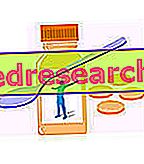Generality
Lateral epicondylitis is a painful inflammation of the tendons that connect the muscles of the forearm to the outside of the elbow (lateral epicondyle). This condition is also known as tennis elbow, given that tennis is the sporting activity that exposes the musculoskeletal structures affected by the disorder to greater tension.
Lateral epicondylitis is often determined by a functional overload, that is by an excessive and continuous use of the elbow, and is typical of subjects who, due to particular sporting or professional activities, are forced to repeat certain movements.
In particular, the tennis elbow is an insertional tendinopathy : the inflammatory process involves the insertion of the epicondyle extensor muscles of the forearm, which originate from the lateral epicondyle of the elbow (located near the bone protrusion in the lower external extremity of the humerus ). The tennis elbow is therefore caused by an inflammation of the muscles and tendons that insert into the lateral epicondyle and which are responsible for the extension of the wrist or fingers.
In principle, the pain associated with lateral epicondylitis affects only the tendons, especially when wrist extension movements are performed against resistance, and tends to increase with activities that require the involvement of muscles in the affected limb. With prolonged abuse, the painful manifestation can radiate along the forearm and persist even at rest, causing the progressive reduction of hand, wrist and elbow function.
Causes and Risk Factors
Abuse and Trauma
Many people with tennis elbow perform work or recreation activities that require repetitive and vigorous use of the elbow joint.
Activities
Athletes are not the only people who need tennis elbow. Lateral epicondylitis may occur as a result of any repeated activity involving twist or wrist extension, weight lifting, and forearm muscle abuse.
Activities that can cause tennis elbow include:
- Racket sports such as tennis, badminton and squash;
- Throwing sports, such as the javelin or the disc;
- Other sports: golf and fencing;
- Professional activities involving repetitive movements of the hands and wrist: plumber, mason, carpenter, butchers, cooks, carpenters, tailors and painters;
- Other activities that intensely stress the elbow and wrist, such as playing the violin or using shears during gardening.
Age
The period of maximum onset of epicondylitis is between 30 and 50 years of age, although anyone can be affected by tennis elbow if there is exposure to the relevant risk factors, such as:
- Work or recreational activities. People performing jobs that involve repetitive movements of the wrist and arm are more likely to develop tennis elbow.
- Some sports activities. Playing racquet sports increases the risk of developing tennis elbow, especially if playing for the first time, with a poor technique or with inadequate equipment (racquet with ropes too tight or too short) and shoulder muscles and untrained wrist.
Signs and Symptoms
To learn more: Epicondylitis symptoms
Tennis elbow symptoms develop gradually. In most cases, the pain starts with mild intensity and slowly gets worse over weeks and months. Generally, there is no specific violent lesion associated with the onset of the clinical picture.
Signs and symptoms of lateral epicondylitis:
- Pain and swelling located on the outside of the elbow, at the lateral epicondyle;
- Pain in the outer part of the forearm, just below the elbow (in correspondence with the epicondylar muscles that engage on the lateral epicondyle). Pain may also radiate along the forearm towards the wrist and the back of the hand;
- Strength in a weak and painful grip, even while holding relatively small objects in your hands;
- Worsening of pain with wrist movements, in particular with extension and lifting movements;
- Morning stiffness.
Symptoms are often worsened by forearm activities, particularly by twisting movements, such as when turning a door handle or opening a jar. The dominant arm is struck with greater incidence, however both limbs can be affected. Pain associated with lateral epicondylitis can be mild or severe (it can be felt even when the arm is kept at rest). An episode of lateral epicondylitis can usually last between six months and two years. However, most people tend to recover within a year.
Note : the pain that occurs on the inner side of the elbow is known as a golfer's elbow and affects the medial epicondyle, whose tendon insertions are responsible for flexing the wrist towards the palm of the hand.
Diagnosis
If the condition is caused by strenuous or repetitive activity, this should be avoided until symptoms improve. However, if the elbow pain persists for several days despite resting, it is advisable to consult your doctor.
Several factors must be taken into account in formulating the diagnosidi lateral epicondylitis; these include the extent of the symptoms that have developed, any professional risk factors and the performance of particular sports activities. The patient must report the exact position in which the pain in the arm is located, if a traumatic episode has occurred and if he is suffering from other concomitant diseases (for example: rheumatoid arthritis, neurites, other rheumatic or arthrosic conditions of the elbow). During the physical examination, the doctor will use a series of tests to ascertain the origin of the pain, through direct palpation and the simultaneous search for signs of local swelling . Some of these exams include:
- Palpation of the lateral epicondyle : the doctor presses at the point of insertion of the epicondyloid muscles, while the patient is asked to move his elbow, wrist and fingers;
- Cozen test : evaluates the presence of pain at extension against resistance of the wrist and fingers at extended elbow;
- Mills test : detects the onset of pain due to forced pronation with a flexed wrist and an extended elbow.
The doctor may recommend further tests to rule out other causes behind the disorder:
- X-rays: to exclude the arthritis of the elbow and highlight any calcifications.
- Magnetic resonance imaging (MRI): can be performed before the suspicion that the onset of symptoms is associated with a neck problem. This exam allows you to highlight a possible herniated disc or arthritis in the neck. Both of these conditions often produce arm pain.
- Electromyography (EMG): the doctor can order an electromyography to rule out compression of a nerve. Many nerve fibers, in fact, run at the level of the elbow and the symptoms of their compression are similar to the manifestations of lateral epicondylitis.
Conservative Therapy
Tennis elbow is a self-limiting condition; this means that it tends to spontaneous healing with rest. However, the pain can last several weeks or months and in this case some treatments can help alleviate symptoms and accelerate recovery. Conventional (non-surgical) treatment is found to be successful in approximately 80-95% of patients.
The pain associated with tennis elbow generally lasts six to twelve weeks. However, in some people, the pain may affect the arm for less than three weeks, while in other patients the disorder may be persistent (from six months to two years). Epicondylitis, if not treated properly, can recur or become chronic.
The first step towards recovery is to rest the affected arm during the period in which the inflammation is in an acute phase. Moreover, it is essential to try to avoid the activity that caused the onset of the problem for several weeks and which could further aggravate the disorder. Local applications of a cold pack to be placed against the elbow for a few minutes, several times a day, can help soothe pain and reduce the inflammatory process.
Taking painkillers, such as paracetamol, can help ease the mild pain caused by tennis elbow. Your doctor may also recommend the use of non-steroidal anti-inflammatory drugs ( NSAIDs ), such as ibuprofen or ketoprofen. In addition to the forms to be taken systemically, NSAIDs are also available as topical creams and gels. Local application, therefore directly on the elbow and forearm, is often recommended for musculoskeletal disorders, as it can reduce inflammation and pain without causing side effects such as nausea and diarrhea.
To learn more: Epicondylitis Treatment Medicines »
Physiotherapy can be recommended if the tennis elbow is more severe or persistent. Manual therapy techniques, such as massage and other manipulations, can help relieve joint pain and stiffness. In addition, the physiotherapist is able to show the patient specific exercises to keep the arm moving and strengthen the forearm muscles. In the short term, it could also be recommended to use a support bandage or a brace, which prevent painful movements, guarantee the rest of the limb and relieve the symptoms of tennis elbow.
Sometimes, for the treatment of particularly painful forms can be considered injections of corticosteroids (infiltrations), which can help reduce pain, but the clinical evidence that supports their use as an effective treatment in the long term is limited. it is performed directly in the painful area at the elbow, after the administration of a local anesthetic.
Finally, if symptoms do not improve after at least a year of conservative therapy, invasive treatments, such as surgery, can be considered.
Surgery
If symptoms do not respond after 6 - 12 months of conventional treatments, your doctor may recommend surgery.
Most tennis elbow procedures can involve:
- The removal of the damaged part of tissue, to relieve painful symptoms;
- The partial disconnection of the extensor tendons of the wrist and fingers;
- Scarification with local bloodying of the epicondyle (at the level of insertion of inflamed muscles): part of the bone is subjected to multiple perforations to guarantee an increased blood supply which favors healing
The patient-appropriate surgical approach depends on a number of factors, including the severity of the injury, the physical characteristics of the individual and his general health conditions. Surgical treatment can be performed in the open or arthroscopically . Both surgeries are performed in day hospital and rarely require overnight stays in the hospital.
Surgical risks
As with any surgical procedure, there are risks associated with the procedures. The most common complications to consider are:
- Infection;
- Damage to Nerves and blood vessels;
- Need for prolonged rehabilitation;
- Loss of strength;
- Loss of flexibility;
- Need for further surgery.
Rehabilitation
After surgery, the arm can be temporarily immobilized with a brace. After about a week, the stitches are removed, as well as the support and appropriate exercises are started to restore the function of the elbow. Within 2 months of surgery, gradual strengthening exercises are organized. After about 4 - 6 months after surgery and after medical consultation, it will be possible to return to athletic activity. Surgery applied to tennis elbow is considered successful in about 80-90% of patients. However, it is not uncommon to experience a loss of strength in the affected limb. Rehabilitation exercises, planned together with the physician and the physiotherapist, are fundamental for recovery.
Also read: Epicondylitis Remedies



